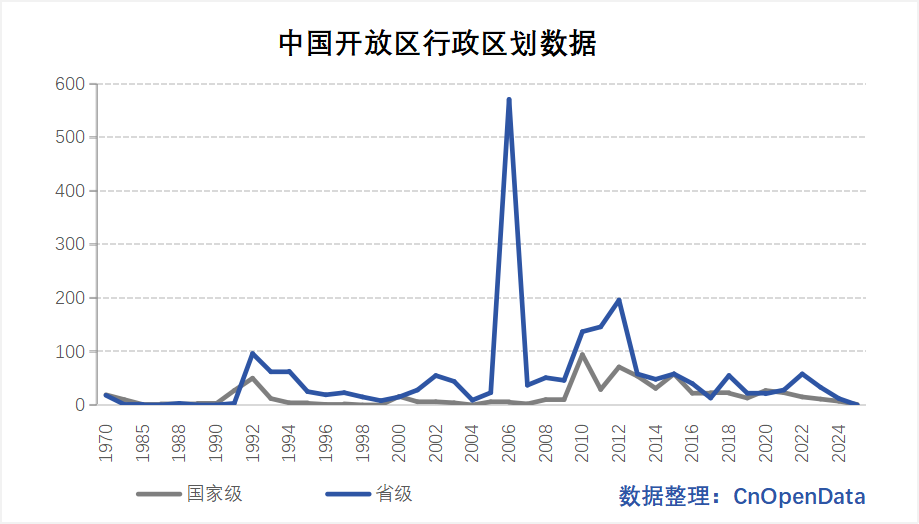In the process of building a socialist economy with Chinese characteristics, China has established numerous characteristic economic zones leveraging regional advantages, including Economic Development Zones (经济开发区), National High-Tech Industrial Development Zones (高新技术产业开发区), Border Economic Cooperation Zones (边境经济合作区), and Special Customs Supervision Zones (海关特殊监管区). In August 1988, the Torch Plan—China's national high-tech industrialization development initiative—was implemented. By 1992, the State Council approved the establishment of the first Border Economic Cooperation Zone. As critical platforms for attracting foreign investment, these economic zones have made significant contributions to China's economic development during its reform and opening-up era.
Both national and provincial-level economic zones typically implement policies such as infrastructure development, enterprise support, and tax/land incentives. Depending on their geographical locations and establishment purposes, these zones also carry unique historical significance. After joining the WTO, China's economy became more integrated with the global market. Development zones attracted multinational corporations, facilitated large-scale foreign investment inflows, and introduced advanced technologies, equipment, and management practices, substantially accelerating China's industrial modernization. However, challenges emerged, including excessive and haphazard proliferation of development zones, indiscriminate land occupation, and zones remaining undeveloped after establishment. To address issues such as unauthorized farmland expropriation under the guise of development zones and infringement on farmers' rights, the State Council launched a nationwide cleanup and rectification campaign starting July 2003. By early 2007, the National Development and Reform Commission, Ministry of Land and Resources, and Ministry of Construction jointly issued the China Development Zone Audit Catalog (2006 Edition). After over three years of rectification, the number of development zones nationwide decreased from over 6,000 to approximately 1,000 by December 2006, with planned areas reduced from nearly 40,000 km² to around 9,000 km².
After decades of development, these zones have become engines for rapid regional economic growth. China continues to promote comprehensive development planning, enhance quality standards, and achieve sound growth in these areas.
The China Development Zone Administrative Division Data released by CnOpenData covers various types of development zones, including high-tech zones, economic development zones, and border economic cooperation zones. The data are categorized into national and provincial-level tables based on administrative hierarchy, with detailed provincial/municipal/county-level administrative division information for each zone. This dataset holds significant value for research in regional economics, industrial economics, and related fields.
Data Scope

Temporal Coverage
This dataset represents cross-sectional data as of December 2024.
Field Description
Sample Data
国家级开发区行政区划数据
省级开发区行政区划数据
Relevant Literature
- Lu Fangwen, Sun Weizeng and Wu Jianfeng. 2023, "Special Economic Zones and Human Capital Investment: 30 Years of Evidence from China", American Economic Journal: Economic Policy.
- Tian, Xuan and Xu, Jiajie, 2018, "Do Place-Based Policies Promote Local Innovation and Entrepreneurship? ", Review of Finance.
- Simon Alder, Lin Shao, and Fabrizio Zilibotti, 2016, "Economic reforms and industrial policy in a panel of Chinese cities.", Journal of Economic Growth.
- Hua Yue and Ye Yun, 2023, "The Carbon Emission Reduction Effects of Green Location-Oriented Policies: Evidence from the Practice of National Eco-Industrial Demonstration Parks", The Journal of Quantitative & Technical Economics 4.
- Li Ben and Wu Lihua, 2018, "Development Zone Establishment and Enterprise Growth: Heterogeneity and Mechanisms", China Industrial Economics 4.
- Bao Qun, Tang Shi, and Liu Bi, 2017, "Local Competition, Homogeneous Leading Industries, and Domestic Overcapacity", The Journal of World Economy 10.
- Wang Bing and Nie Xin, 2016, "Industrial Agglomeration and Environmental Governance: Catalyst or Obstacle? Evidence from Quasi-Natural Experiments of Development Zone Establishment", China Industrial Economics 12.
- Wang Yongjin and Zhang Guofeng, 2016, "Sources of Productivity Advantages in Development Zones: Agglomeration Effects or Selection Effects?", Economic Research Journal 7.
- Li Lixing and Shen Guangjun, 2015, "Economic Development Zones, Regional Comparative Advantages, and Industrial Restructuring", China Economic Quarterly 3.
- Zheng Jianghuai, Gao Yanyan, and Hu Xiaowen, 2008, "Enterprise Clustering, Technological Upgrading, and Economic Performance: Empirical Analysis of Agglomeration Effects in Development Zones", Economic Research Journal 5.
- Yu Huayi, Hou Yujuan, and Hong Yongmiao, 2021, "Regional Integration Effects of Municipal District Mergers: Evidence from Real Estate Microdata and Urban Economic Data", China Industrial Economics 4.
Update Frequency
Annual update
